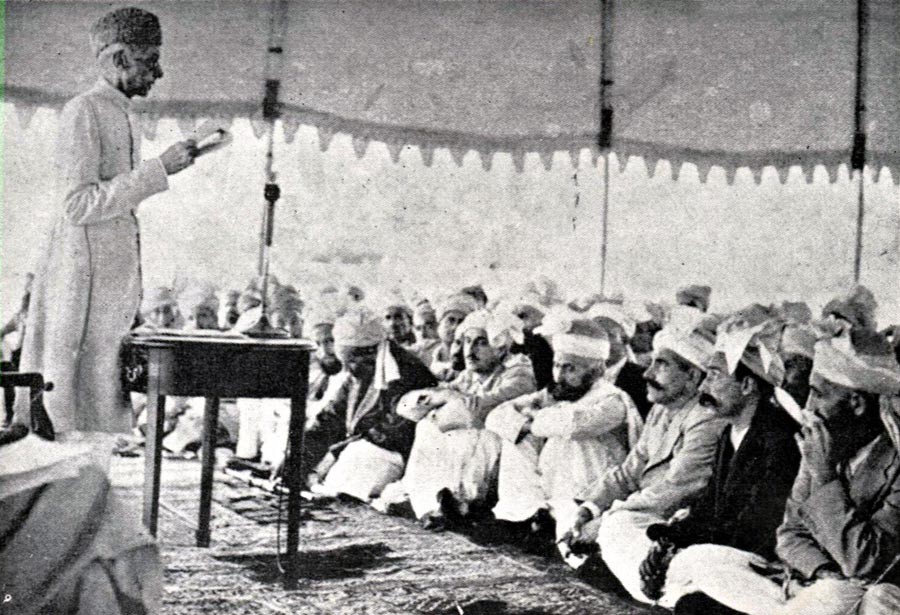
Some historical facts outlining the status of tribal areas

While fate of the constitutional reforms on Federally Administered Tribal Areas (Fata) hangs in balance, the latest salvo in opposing the much-delayed reforms for the tribal region came from none other than Mehmood Khan Achakzai, chief of the Pashtunkhwa Milli Awami Party. Achakzai has repeatedly used ‘azad’ incorrectly for tribal areas in the sense of being independent to the extent of being sovereign.
Tribal areas have historically, at least since colonial period, enjoyed a semi-autonomous status -- not a sovereign status -- in the sense that inhabitants of these areas were provided for managing their internal affairs according to their tribal traditions and culture at least constitutionally or legally. Practically, legal provisions have, probably, been more honoured in the breach than the observance, something which this piece isn’t discussing.
In his December 14 speech in the National Assembly, Achakzai, while quoting Indian Independence Act, 1947, said that Federally Administered Tribal Areas were not part of Pakistan. Similarly, in an interview, dated March 22, 2017, with BBC Pashto Service, he said that as per section 311 of Government of India Act, 1935, tribal areas were independent because the section stated tribal areas to be neither part of British India nor Indian states nor Burma nor sovereign state. From the Achakzai’s viewpoint, Fata retains an ‘independent’ status. Really?
Subsection (1) of Section 311 of the Government of India Act, 1935, dealt with ‘interpretation.’ British India meant "Governors’ Provinces and the Chief Commissioners’ Provinces." India meant "British India together with all territories of any Indian Ruler under the suzerainty of His Majesty, all territories under the suzerainty of such an Indian Ruler, the TRIBAL AREAS, and any other territories which His Majesty in Council may, from time to time, after ascertaining the views of the Federal Government and the Federal Legislature declare to be part of India." The only difference between British India and the tribal areas in the North West of India, today’s Fata, was that whereas British India was directly administered, tribal areas were semi-autonomous in the sense that administration was mainly carried through intermediaries, tribal elders, who were left to look after internal affairs of the tribesmen according to their traditions and customs.
According to the Indian Independence Act, 1947, Pakistan comprised "…provinces of East Bengal and West Punjab" (Clause (a) of Sub-Section (2) of Section (2); "…the Province of Sindh and the Chief Commissioner’s Province of British Baluchistan" (Clause (b) of Sub-Section (2) of Section (2); and the then North West Frontier Province (Clause (c) of Sub-Section (2) of Section (2), though the province’s accession to Pakistan depended upon the result of referendum which duly decided its fate with Pakistan." Besides Indian provinces, there were also some six hundred Princely States that were to choose between India and Pakistan. According to subsection (4) of the section (2) of the Indian Independence Act, 1947, "…nothing in this section shall be construed as preventing the accession of Indian States to either of the new Dominions [Indian and Pakistan]".
In how much compromising situations the accession might have been carried out in some instances by the two dominions of India and Pakistan is a different story, the fact that latter was not confined to provinces mentioned in Section (2) of the Indian Independence Act, 1947 is crystal clear!
Indian Independence Act 1947 freed tribal areas of any agreement and treaty signed with the British. Clause (c) of Subsection (1) Section (7) of the act read: "there lapse also any treaties or agreements in force at the date of the passing of this Act between His Majesty and any persons having authority in the tribal areas…" Nevertheless, Clause (b) Subsection (3) Section 19 of the act provided for "…the participation in either of the said Assemblies [Constituent Assembly India and Constituent Assembly Pakistan], in accordance with such arrangements as may be made in that behalf , of representatives of the TRIBAL AREAS on the borders of the Dominion for which that Assembly sits…"
What is obvious is the act did not envisage tribal areas in Indian North West, which later became Fata, to be independent or sovereign but that these areas could become part of either India or Pakistan "in accordance with such arrangements as maybe made in that behalf…"
Similarly, while speaking in the House of Lords, on the occasion of second reading of the independence act on July 16, 1947, Lord Listowel, Secretary of State for India, said: "We do not, of course, propose to recognize any [Princely] States as separate international entities." On the count of tribal areas, "…without prejudice to the re-negotiation of the existing political agreements of the tribes with the appropriate successor authority," he left no doubt that tribal areas were meant to be part of either of the two emerging states, which meant Pakistan after the referendum vote determined the inclusion of former NWFP in Pakistan!
Post independence, Pakistan started signing agreements with the representatives of tribesmen to include tribal areas within the country. Signed from November 3, 1947 to 1st May 1964, the agreements, in the official record, are captioned as Agreements of allegiance and cooperation with tribes. Two points are worth mentioning in these agreements. First, the pledge: "We proclaim that our territory is an integral part of the dominion of Pakistan and we are citizens of Pakistan." The pledge demonstrated that tribesmen have not been independent in Pakistan as proclaimed by Achakzai. Secondly, the plea: "in the internal affairs of our tribe the Pakistan Government ensures the maintenance of our tribal customs and usages and all our tribal customs and in consultation with and through our tribal leaders." The plea showed that tribesmen requested for their semi-autonomous status, a hangover from the colonial past.
Although the dichotomy of British India and India has ceased to exist, the colonial tradition of treating tribal areas administratively different has proven to be more resilient than ever!